|
PILAR BOAT MODEL
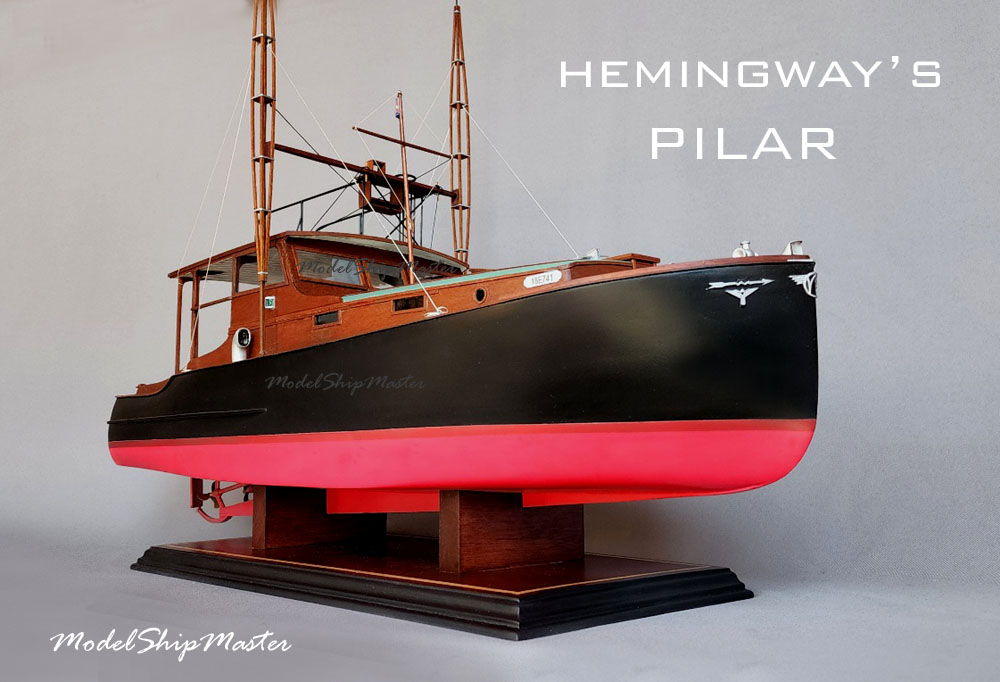
Pilar was a 38-foot
boat owned by Ernest Hemingway. The boat was
constructed in the Coney Island yard of the Wheeler
company and delivered to
Hemingway at Miami. Hemingway sailed the Pilar under its
power from Miami to Key West. Hemingway regularly fished off the Pilar boat in Key
West, Florida. He made three trips by boat to the Bimini Islands, wherein his fishing and boxing exploits
drew much attention and remain part of the island's
history.
In addition to fishing
trips on the Pilar boat, Hemingway contributed to scientific
research, including collaboration with the Smithsonian
Institution. Several of his books were
influenced by time spent on the Pilar boat, most notably The
Old Man and the Sea (1953) and Islands in the Stream
(1970). The Pilar yacht also inspired the name of Playa Pilar
(Pilar Beach) on Cayo Guillermo. The opening and other
scenes in the 2012 film Hemingway & Gellhorn depict a
miniature Pilar yacht model.
During World War II,
Hemingway used his Pilar boat to search for German
U-boats in the Caribbean waters. Pilar was outfitted
with communications gear. His minimal armament included
a Thompson submachine gun and grenades. Hemingway
wrote about his intent to attack if he spotted a sub.
His hunting for U-Boats inspired the third act, "At
Sea," in his novel Islands in the Stream.
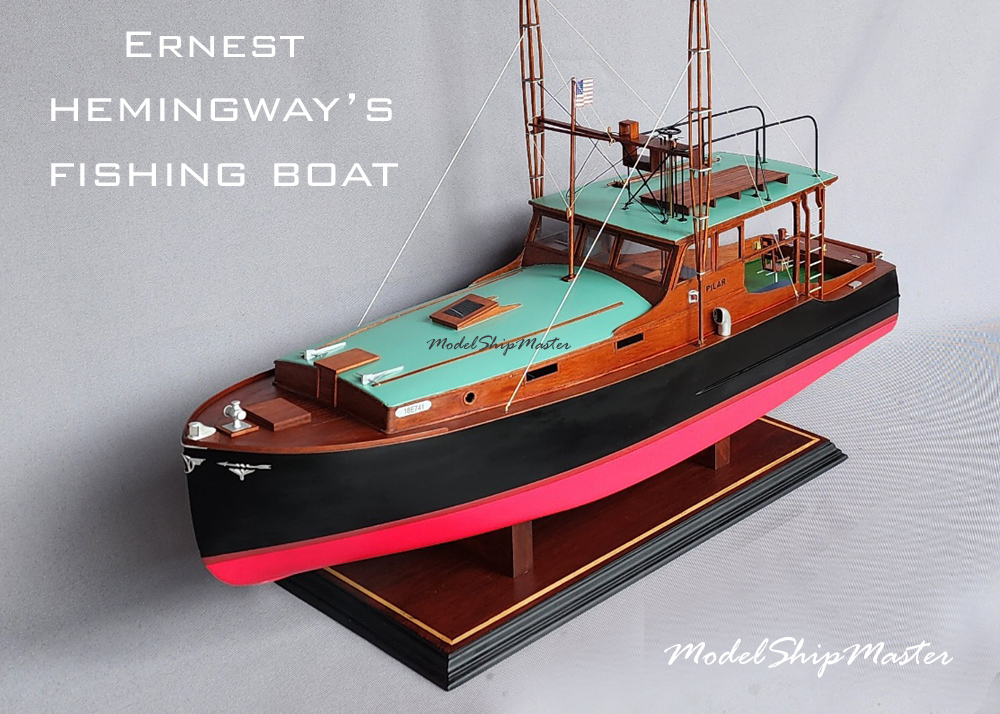
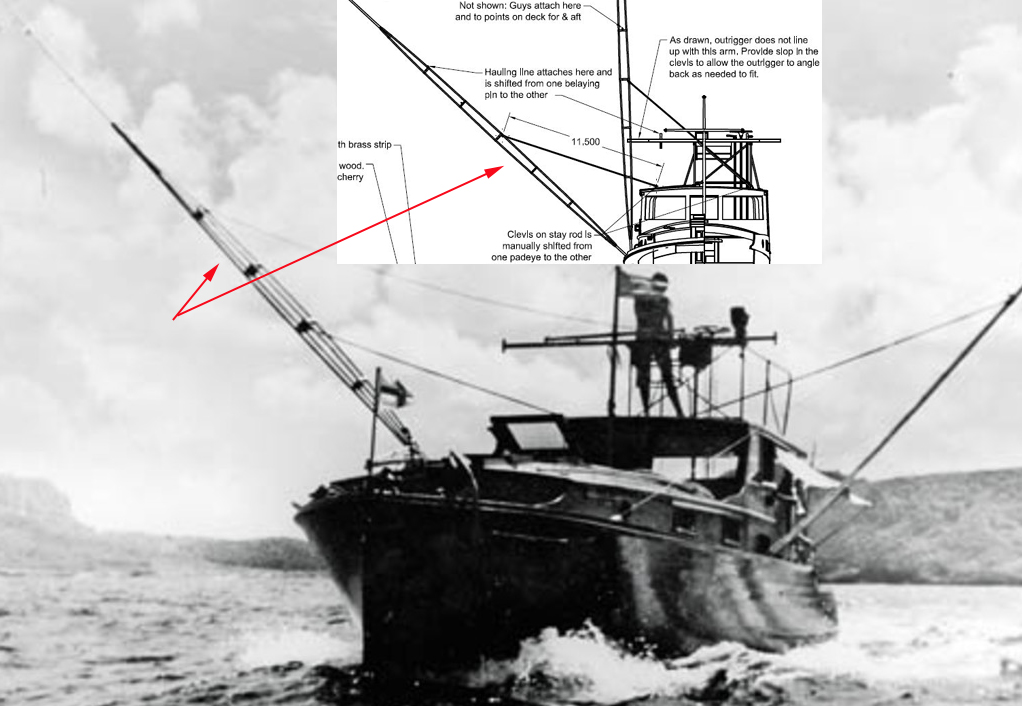
Hemingway was an avid
fisherman and a great contributor to the development of
the sport. During his three Bimini trips which started
in April 1935, Hemingway perfected fishing techniques
for tuna. He
caught numerous record-breaking fish from his Pilar
boat. In 1935, he won every tournament in the Key
West-Havana-Bimini triangle. In 1938, he established a world record by
catching seven marlins in one day.
While on
Bimini, Hemingway also staged boxing matches with the
locals, offering $100 to anyone who could last a few
rounds with him. Hemingway at first lived in his Pilar
boat but
later moved to a cottage near Brown's Dock and
eventually, a room at the Compleat Angler Hotel.
Hemingway
also contributed to the knowledge of Atlantic marine
life. During his first visit to Cuba onboard boat Pilar,
he hosted Charles Cadwalader, director of the
Academy of Natural Sciences of Philadelphia, and Henry
Fowler, the Academy's chief ichthyologist. As a result
of their efforts on the Pilar, they reclassified the
North Atlantic marlin variants.
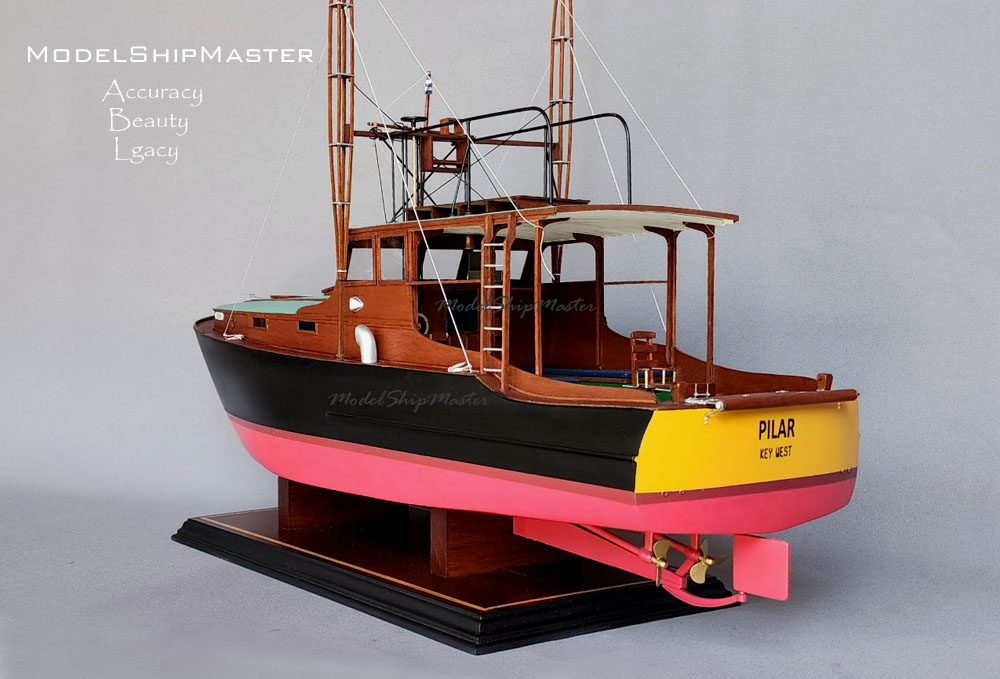
The primarily wood
Hemingway's Pilar boat model shown in this page is 32" x 30" tall x
10"
wide
$4,750. We also build
24" long ($2,990)
and 40" long ($5,900).
Models are built per commissions only. We require only a
small deposit to start
the process. The
remaining balance won't be due until the
Pilar
model is
completed.
Please click
here for
leadtime.
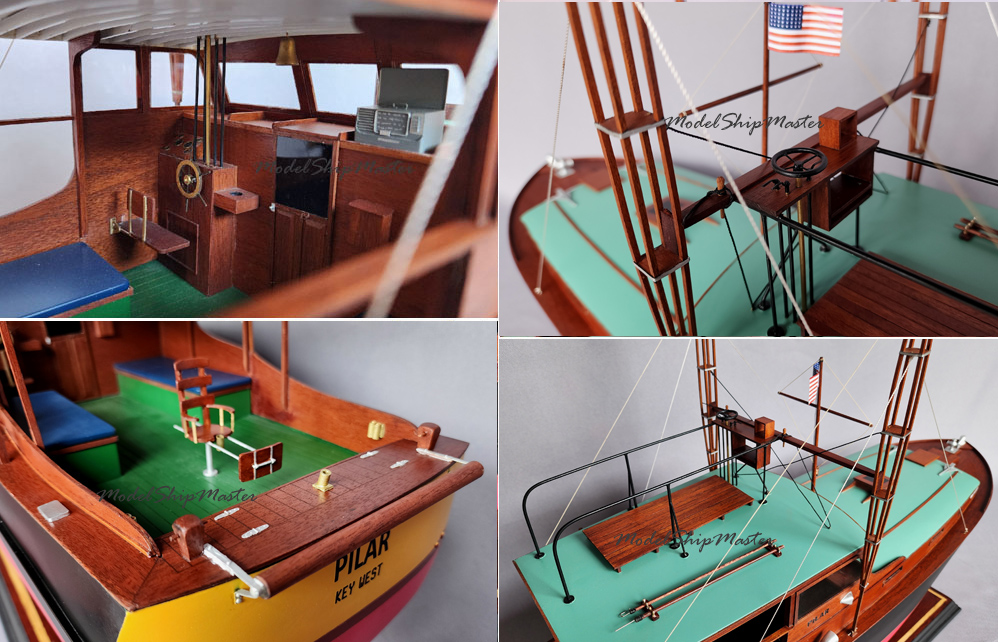

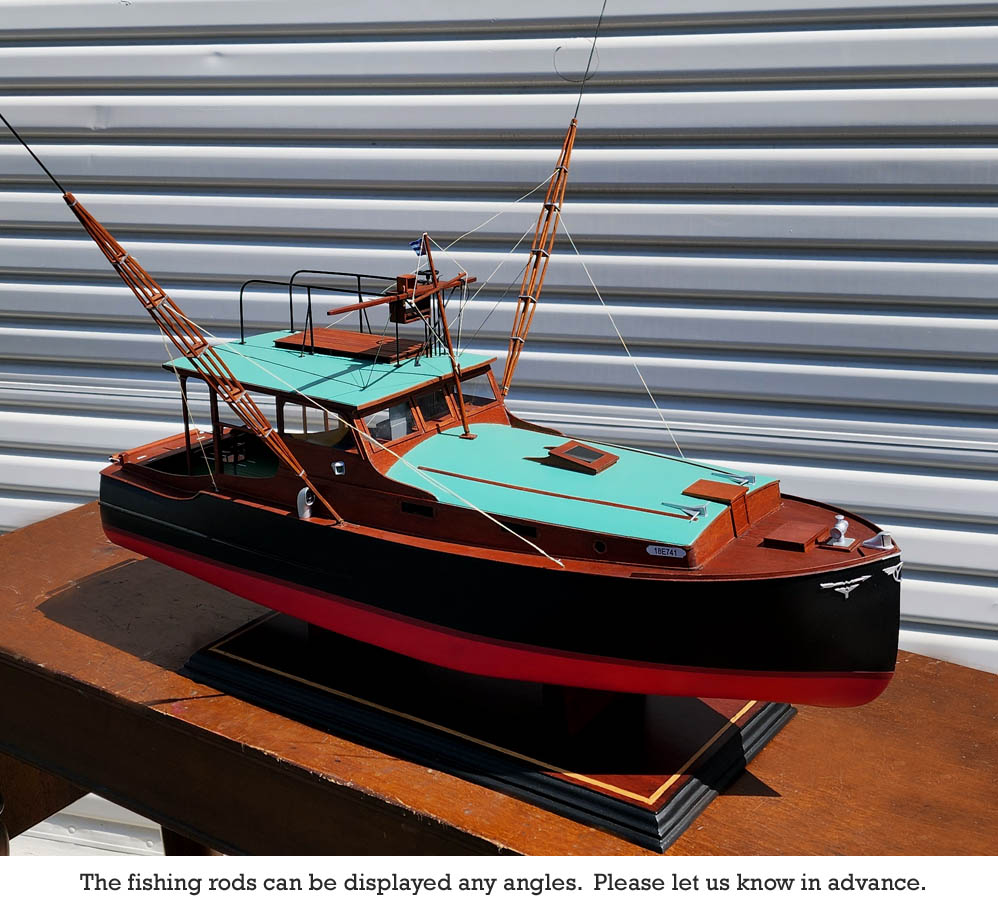
Learn more about the
Hemingway's Pilar
boat here:
https://en.wikipedia.org/wiki/Pilar_(boat)
|